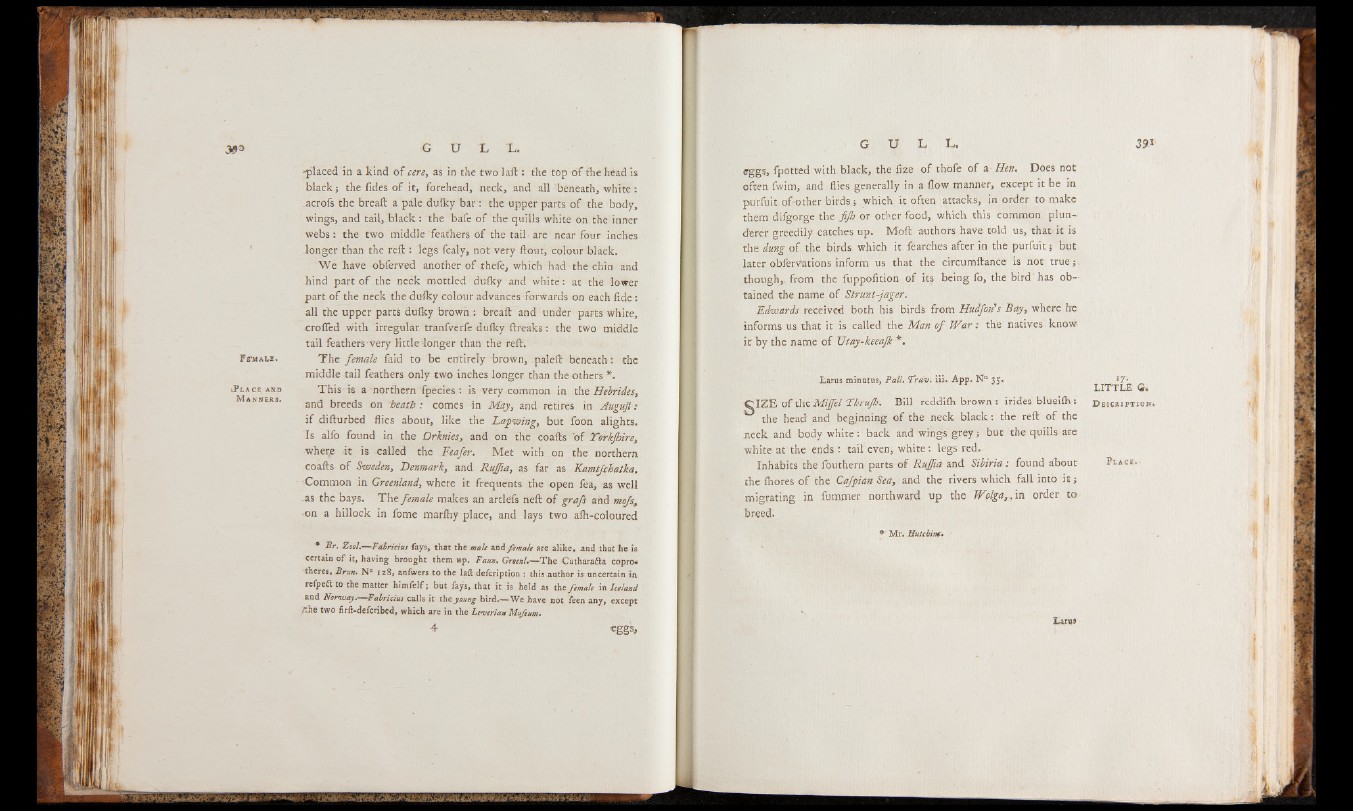
Fb’malb.
iP lace and
.Manners.
placed in a kind of cere, as in the two laft : the top of the head is
black i the fides of it, forehead, neck, and all beneath, white :
acrofs the breaft a pale dulky bar : the upper parts of the body,
wings, and tail, black: the bafe of the quills white on the inner
webs : the two middle feathers of the tail are near four inches
longer than the reft : legs fcaly, not very ftout, colour black.
We have obferved another of thefe, which had the chin and
hind part of the neck mottled dulky and white: at the lower
part of the neck the dufky colour advances forwards on each fide:
all the upper parts dulky brown : breaft and under parts white,
crofted with irregular tranfverfe dulky ftreaks: the two middle
tail feathers very little longer than the reft.
The female faid to be entirely brown, paleft beneath: the
middle tail feathers only two inches longer than the others *.
This- is a northern fpecies : is very common in the Hebrides,
and breeds on heath : comes in May, and retires in Juguft:
if difturbed flies about, like the Lapwing, but foon alights.
Is alfo found in the Orknies, and on the coafts of Torkjhire,
wher(e it is called the Eeafer. Met with on the northern
coafts of Sweden, Denmark, and Ruffia, as far as Kamtfchatka.
Common in Greenland, where it frequents the open fea, as well
as the bays. The female makes an artlefs neft of graft and mofs,
on a hillock in fome marlhy place, and lays two alh-coloured
* -®r* Zool.— Fabricius fays, that the male and female are alike, and that he is
certain of it, having brought them up. Faun. Green!.— The Catharacta copro-
-theres, Brun. N° 128, anfwers to the laft delcription : this author is uncertain in
refpeft to the matter himfelf; but fays, that it is held as the female in Iceland
and Norway.— Fabricius calls it the young bird.— We have not leen any, except
l& f two firft-defcribed, which are in the Lemrian Mufeum.
4 eggs,
eggs, fpotted with black, the fize of thofe of a Hen, Does not
often fwim, and flies generally in a flow manner, except it be in
purfuit of-other birds; which it often attacks, in order to make
them difgorge the fijh or other food, which this common plunderer
greedily catches up. Moft authors have told us, that;it is
the dung of the birds which it fearches after in the purfuit; but
later obfervations inform us that the circumftance is not true
though,., from the fuppofition of its being fo, the bird has obtained
the name of Strunt-jager.
Edwards received both his birds from Hudfon's Bay, where he
informs us that it is called the Man of War: the natives know
it by the name of XJtay-keeaJk *.
Larus minutus, Pall. Tram. iii. App. N® 35. 17-
LITTLE a .
C IZ E of the Miffel Lhrufh. Bill reddilh brown : irides blueiftv: Description.
the head and beginning of the neck black: the reft of the
neck and body white: back and wings grey; but the quills are
white at the ends : tail even, white: legs red.
Inhabits the louthern parts of Ruffia and Sibiria: found about Place»-
the Ihores of the Cafpian Sea, and the rivers which fall into i t ;
migrating in fummer northward up the Wplga,., in order to
breed.
® Mr. Hutcbint.